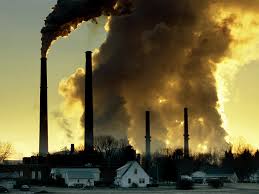
Govt Clarifies Complex Impact of Air Pollution on Health and Details National Efforts to Improve Air Quality
In response to growing concerns about air pollution and its impact on public health, the Government of India has clarified that there is no conclusive data to establish a direct correlation between air pollution and death. While acknowledging that air pollution is a significant factor in respiratory ailments and associated diseases, the government emphasized that health outcomes are influenced by a multitude of factors, including food habits, occupational habits, socio-economic status, medical history, immunity, heredity, and the environment.
To address air quality, the Ministry of Environment, Forest and Climate Change (MoEFCC) launched the National Clean Air Programme (NCAP) in January 2019. The NCAP aims to improve air quality in 131 cities across 24 states by engaging all stakeholders and targeting a reduction in particulate matter (PM) concentration by 20-30% from 2017 levels by 2024. This target has been revised to a 40% reduction or achievement of national standards (60 µg/m³) by 2025-26.
City Action Plans (CAPs) have been developed and are being implemented by urban local bodies. These plans focus on reducing pollution from sources such as soil and road dust, vehicles, domestic fuel, municipal solid waste burning, construction materials, and industries. Performance-based financial support is provided to these cities for implementing their respective action plans, with funding mobilized through various central government schemes and state resources. Additionally, a Public Grievance Redressal Portal (PGRP) has been established to address public complaints about air pollution, and an Emergency Response System (ERS/GRAP) has been developed for timely action during air quality emergencies.
Financially, an amount of Rs. 19,614.44 crores has been earmarked for the 131 cities from FY 2019-20 to FY 2025-26. Significant funds have already been released to support the implementation of City Action Plans, with 95 out of 131 cities showing improvements in PM10 levels in FY 2023-24 compared to the baseline of FY 2017-18. Furthermore, 18 cities have met the National Ambient Air Quality Standards (NAAQS) for PM10.
In addition to the NCAP, several other measures have been taken to improve air quality. These include the notification of ambient air quality standards, revision of emission standards for various industrial sectors, and the expansion of the monitoring network for ambient air quality assessment. Cleaner fuels like CNG and LPG are being promoted, along with ethanol blending. The National Air Quality Index has been launched, and the transition to BS-VI fuel standards and vehicles has been implemented. Construction and Demolition Waste Management Rules have been introduced, and continuous monitoring devices have been installed by major industries. The Graded Response Action Plan for Delhi and NCR has been notified, and the Commission on Air Quality Management (CAQM) in NCR and adjoining areas has been established. Vapour Recovery Systems are being installed in petrol pumps, and Online Continuous Emission Monitoring Systems (OCEMS) have been directed for highly polluting industries. Brick kilns are being shifted to zig-zag technology.
This comprehensive approach underscores the government's commitment to improving air quality and addressing the multifaceted nature of health impacts related to environmental factors. The information was provided by Kirti Vardhan Singh, Minister of State for Environment, Forest and Climate Change, in a written reply to the Rajya Sabha.